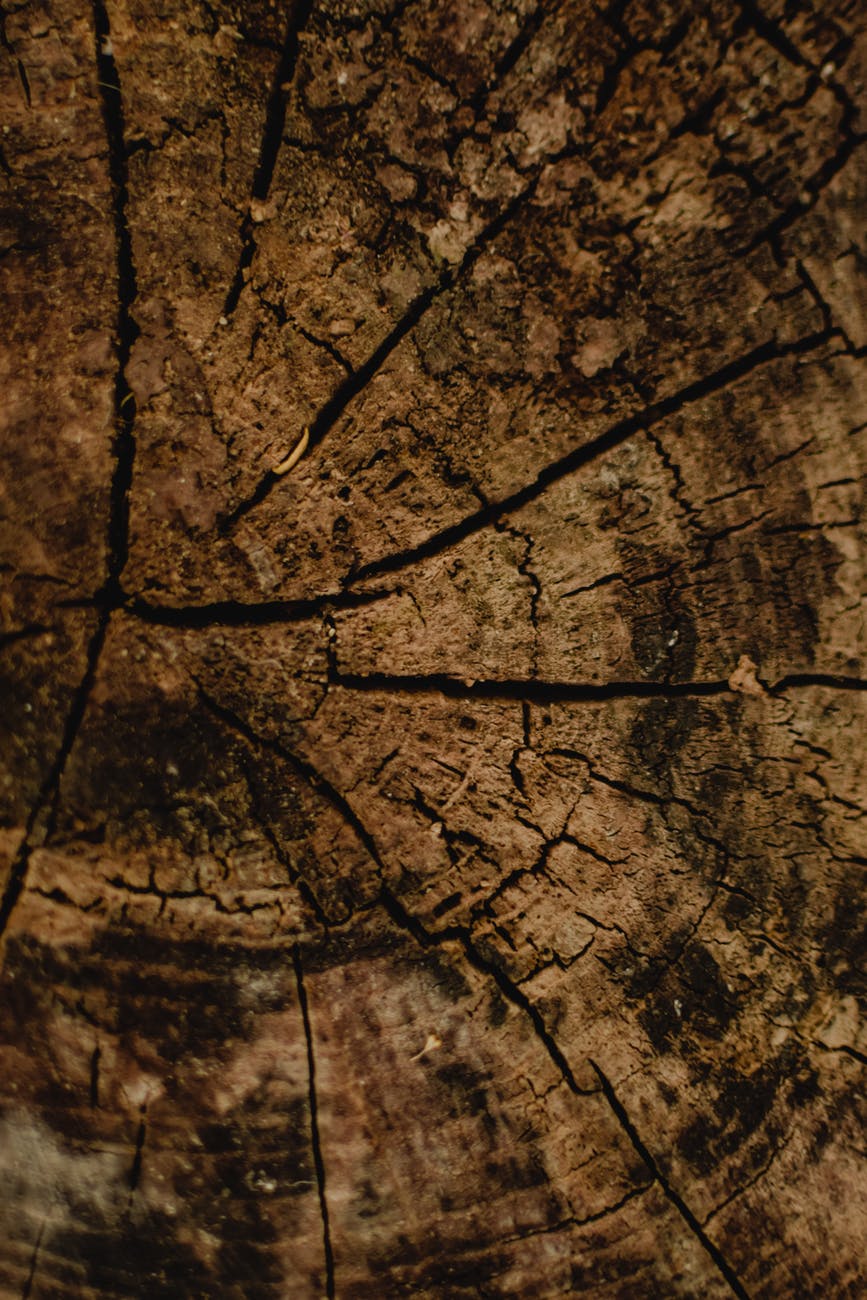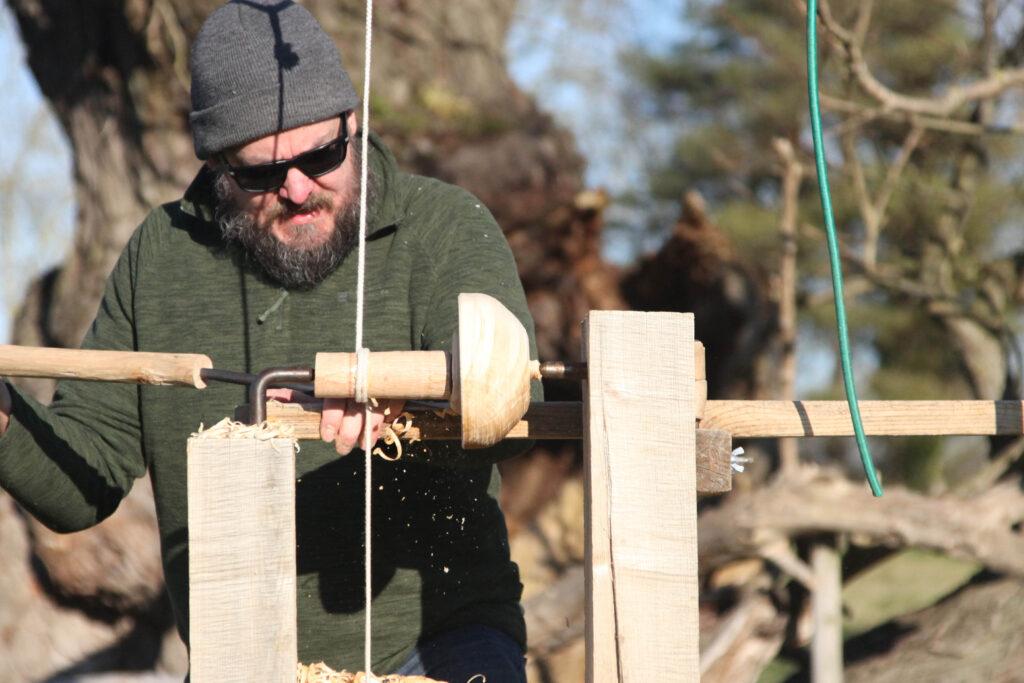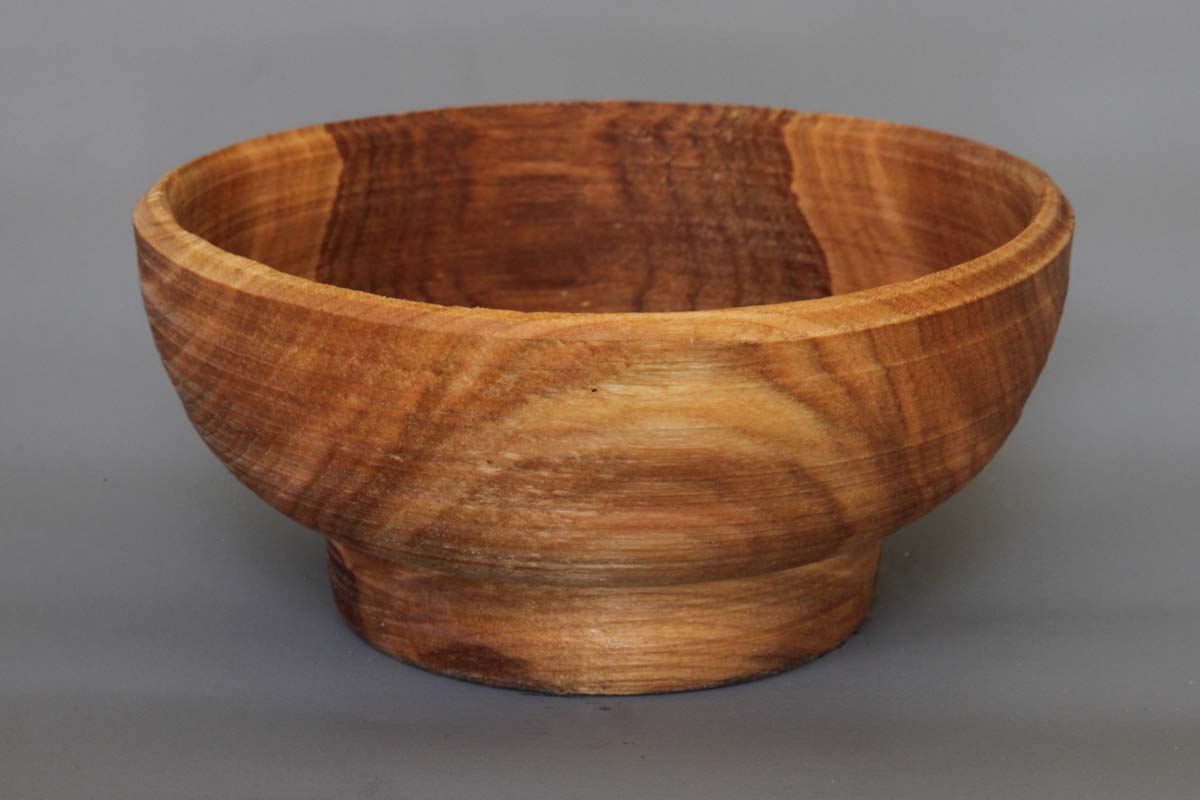
Greenwood woodworking is the art of working with freshly harvested, or “green,” wood. This type of wood has a higher moisture content than kiln-dried wood, which means it is softer and easier to carve or shape. Greenwood woodworking techniques include using hand tools such as axes, knives, and chisels to create functional and decorative items such as bowls, spoons, and baskets. One of the benefits of greenwood woodworking is that it allows the woodworker to follow the natural shape and form of the wood, rather than having to force it into a specific shape. Additionally, working with green wood can be a more sustainable option, as it reduces the need for kiln-drying, which requires energy and resources.
Why is this important?
Greenwood is a lot softer than seasoned wood. This makes turning wood a lot easier and is gentler on hand tools. For example, it is possible to turn greenwood oak bowls using a foot-operated pole-lathe. Once the wood is seasoned and dries out oak is too hard to work in the same way.
One characteristic of green wood is that when it dries it will change shape or warp. This character can be used to the woodworker’s benefit, for instance, when making greenwood furniture, parts are normally joined using a mortice and tenon joint. When the wood dries the tenon becomes an oval shape, by aligning the grain correctly the distortion locks the tenon in place forming an extremely strong joint without the use of glue. In my case, as a bowl turner, when I prepare a log to be turned into a bowl I split the wood through the centre of the log. This releases much of the tension that causes the cracks you can see in the following picture.

Benefits of Using Green Wood
Using green wood in woodworking has several benefits. It is easier to work with than dried wood, making it ideal for carving, shaping, and bending. Additionally, green wood has a unique aesthetic, with vibrant colours and natural grain patterns that can add character to a finished piece. Finally, green wood can be more sustainable, as it requires less energy and resources than dried wood.
Working with Green Wood: Tips and Techniques
Working with green wood requires a different approach than working with dried wood. First, it’s important to understand that green wood will shrink and warp as it dries. So it’s important to account for this in your design and construction. Additionally, green wood is more prone to splitting and cracking. Making it important to use sharp tools and work slowly and carefully. Finally, it’s important to let the wood dry slowly and evenly to prevent warping and cracking. With these considerations in mind, working with green wood can be a rewarding and enjoyable experience for woodworkers of all levels.
Green Wood Bowls
I turn bowls on a traditional pole-lathe. You can see examples of my bowls in my shop.

This makes using green wood vital, as seasoned wood is too hard and would blunt my tools very quickly. I also need to split the log through the centre or pith. This releases tension that would build up as the wood dries. If I didn’t, ultimately the bowl would split.
As the bowl dries, it will naturally warp. This gives every bowl I make its unique character. There is still the risk that the bowl will crack during the drying process which can be frustrating, however, it can also lead to some interesting results like this bowl which has been repaired using butterfly ties.

As you can see the pith, or centre of the log, is very close to the top edge. As the bowl dried it created a lot of tension that has resulted in serval cracks appearing. To stop the cracks from getting any larger the craftsperson has used butterfly ties. Other makers use copper wire or staples to perform the same task.
Whilst fixing the bowl is an interesting project and can end up with a unique item, the aim is to create a bowl that is durable and long-lasting.





Learning More About What is Greenwood Working
Green woodworking is a craft of immense value, offering numerous benefits, be it physical, mental, or ecological. Delving into this art form allows an individual to foster a deep connection with nature, understanding and appreciating the unique properties of each wood type. As a green, sustainable activity, it encourages an environmentally conscious lifestyle, teaching us to create with respect for our natural resources.
Physically, green woodworking is a hands-on skill that can be surprisingly satisfying and therapeutic. The act of shaping and transforming wood not only improves dexterity and hand-eye coordination but also engages the whole body in a non-strenuous, low-impact exercise. Moreover, it promotes spatial reasoning and critical thinking, essential cognitive skills that are often honed in the process of crafting functional and aesthetically pleasing wooden items.
From a mental perspective, green woodworking acts as a creative outlet and stress reliever. The peaceful, meditative process of carving allows one to momentarily disconnect from the digital world and foster mindfulness. As you attentively shape a piece of greenwood, the rhythmic process of carving can induce a state of flow. This facilitates a sense of serenity and fulfilment. This practice can significantly reduce anxiety and improve overall mental well-being.
Additionally, learning greenwood woodworking skills, such as bowl turning, cultivates a sense of self-reliance. The skills mastered can be utilized for practical purposes like making furniture, utensils, or even sculptural pieces, minimizing dependence on mass-produced items.
Lastly, greenwood woodworking instils an appreciation for the value of time, patience, and precision. It demonstrates that quality cannot be rushed but is achieved through meticulous attention to detail and careful craftsmanship. This wisdom can be extrapolated to many aspects of life beyond woodworking. Thereby making the art of greenwood carving a truly enriching and beneficial endeavour.
Sources of Support for Green Woodworkers
If you want to learn more about what is green woodworking, you can check out your local Bodger’s group. Mine is the Burwash Green Woodworkers or Burwash Bodgers. If you need information on other groups, the Association of Pole-lathe Turners and Greenwood Workers site has details.

[…] someone, and I wish I knew who so I could thank them, had brought it the remainder of the way. The green woodworking community is such a nice group of people and one that I am proud to be part […]